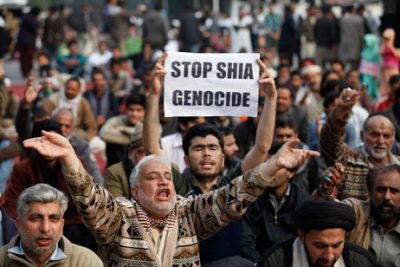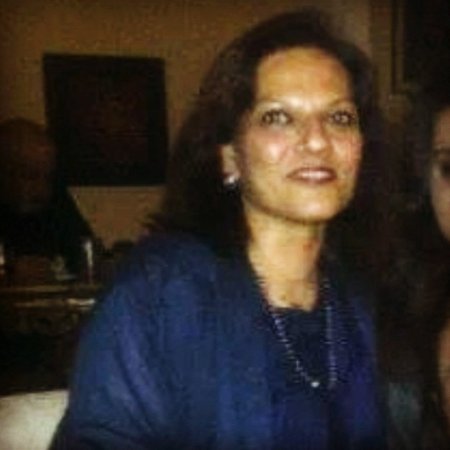By
Sabena Siddiqi
Pakistan has a 96.4 percent Muslim population, of which 85-90 percent is Sunni and 10-15 percent Shia. This is a substantial Shia population, the largest being in Iran. Elsewhere in Pakistan, 1.85 percent of the population are Hindus and 1.6 percent Christians.
In recent years, Shias, or the minorities, have been victims of terrorism, but not more than the Sunni majorities who have died in huge numbers.
Proxy wars and urban warfare are a reality in today’s world, especially if the adversary is a nuclear power and it is not feasible to engage it in a ‘regular’ war. This was the case with Pakistan, all its enemies and competitors engaged in proxy warfare with it, some more and some less.
Terrorism in Pakistan cannot be segregated on ethnic or sectarian lines. Terrorists try to exploit these faultlines occasionally but then switch to something else where they can cause more destruction and get the world’s attention.
Shias have been victims of terrorism in Pakistan, but comparative statistics belie the theory that sectarian target-killing is going on here because of the majority of Sunnis.
It is Sunnis themselves who are mainly victims of suicide attacks or any other form of terrorism. If nearly 15% of Pakistanis are Shias they therefore have a chance of facing a terrorist attack.
Pakistan has suffered losses of $80 billion dollars with more than 50,000 lives being taken in the war on terror over the last ten years.
Everyone is at risk, regardless of their religious affiliation.
A comparative breakdown of Sunni and Shia victims dispels the impression that only Shias are specifically being killed.
Shias accounted for less than one eighth of the total victims of terrorism, targeted attacks being carried out on Sunnis also. 60 percent of the victims from these attacks died in bomb blasts and explosions.
Shias certainly become victims of crime in Iran which is predominately a Shia country, even though it has less terrorism.
Recently, Fatima Bhutto happened to write an article on Shias being attacked in Pakistan by Sunnis.
“They are everywhere, the victims and the perpetrators both,” she wrote in The Hindu with mindless fury.
Saying Shias have overtaken Hindus and Christians as targets of sectarian killings, Fatima Bhutto has said that Pakistan has become a country of ghosts. Her anger at Pakistan is neverending, perpetually finding fault in the country to which her father belonged. She said previously that if she lived in Pakistan, she would have a nervous breakdown.
Still, she owes her fame to the Bhutto name, in emotional tirades often lambasting the people of Pakistan. She never stopped to think of the millions of Sunni Pakistanis who lost their lives to this region’s terrorism, instead chosing to pick out Shia or minority cases of terrorism.
It is wrong to use isolated incidents to incite Shia-Sunni conflicts where none exist. There have been numerous inter-marriages, the majority of Pakistanis having no problem with any such sect.
Bhutto also has objections to the discontinuation of the moratorium on the death sentence, going on to say “This was the response after the brutal Peshawar school attack: kill deathrow convicts and we will be safer. But since then,we have only had more blood.”
She has gone totally off track here too, lifting the moratorium was not about revenge but about justice for heinous crimes. The Peshawar APS school attack was Pakistan’s 9/11. If this attack hadn’t woken everyone from hibernation, then we weren’t worthy of being called a nation.
There has not been “more blood”, terrorist attacks have decreased in the country.
These kind of remarks delight Pakistan’s enemies and it is they who gain mileage from such articles.
It would have been more fitting if Fatima had delved into some fact-finding instead of this outburst. Unfortunately, it gives the impression that she wants to be in the limelight by projecting this negative image of Pakistan.
Pakistan is vulnerable to terrorism due to its geostrategic importance. Its location attracts attention and all major powers become interested in acquiring leverage here.
The Soviets invaded Afghanistan in 1979 with the ultimate intention of invading Pakistan. However, Pakistan trained, armed and guided the Mujahideen to oust the Soviets with the assistance of US supplied weapons, the Soviets finally being defeated in 1989.
The US invaded Afghanistan in 2001 and roped in Pakistan for assistance, this creating Arab Mujahideen and Taliban enemies for Pakistan.
Drone attacks on Pakistani territories further created a backlash against Pakistan.
India took advantage of the situation, establishing four consulates and an embassy in Afghanistan and started creating problems in the Baluchistan province of Pakistan.
It also got together Arab and Taliban fighters and local mercenaries to create the TTP (Tehreek e Taliban Pakistan). Weapons used by TTP against the Pakistan army in Swat were all US-made which the US said were stolen in Afghanistan.
The US was also worried about the building of Gwadar port by China in Pakistan’s Baluchistan province, feeling this may decrease US importance in this valuable region.
The recent China-Pakistan Economic Corridor (CPEC) is threatening for India. India’s intentions are easily understood, Modi on his recent visit to China trying his best to dissuade the Chinese from executing CPEC.
Earlier I had the opportunity to read some tweets from Lt.General H.S.Panag(R) @rwac48 on Twitter, his comments illustrating the Indian plan very succinctly, six of which are below:
“Our strategy must focus on direct covert actions and exploiting the Pakistan faultlines, ie. Baluchistan, FATA, Baltistan, Shias and economy.”
“Saudi Arabia and Qatar have been funding Islamic radical organisations, but Baluchistan has all the fault-lines, ethno, religio, economic and state suppression.”
“Possible options exploit Pakistan’s fault-lines. Who is the victim ? Shias not Sunnis. Who needs help ? Shias.”
“Pakistan has severe limitations and many faultlines. Exploit them. Firing on the LOC is stalemate activity.”
“War is no option. Apart from diplomacy aim to cause deterrent pain. Covert ops to exploit fault-lines best bet.”
“But rather than the religio, it is ethno-eco fault-lines which are more critical.”
There is no easier way to illustrate the Indian stance than with these tweets.
These were the main triggers of terrorism. The provincial capitals were particularly volatile as they were the government power base, and attacks there had a more theatrical and dramatic impact. Terrorists felt they wreaked more destruction there, got more media coverage,targets and better hiding places.
So, in this way, sleeper cells of such groups still exist in all large cities and are used to carry out attacks of all types against minorities or sects, foreigners; anything which can grab world attention.
The Karachi airport attack or APS school attack were on a larger, almost war like scale.
Terrorism has greatly decreased in Pakistan due to the Zarb e Azb army operation. From this, the entire TTP infrastructure has been destroyed.
Terror incidents have significantly declined since June 15, 2014 when the operation began. There an 82 percent fall in the number of terrorists attacks and a decline of 87 percent in the number of casualties during the last four months of the current year, compared to the corresponding period of last year.
Ranger operations in cities like Karachi have also helped bring down the crime statistics of kidnapping, extortion, the daily head count of deaths in the city decreasing drastically as they dismantled the gang-war set up.
If the army and law enforcement agencies keep providing these kind of results, terrorism can be virtually wiped out of the country, perhaps even in just one year’s time.



No Comments Yet!
You can be first to comment this post!